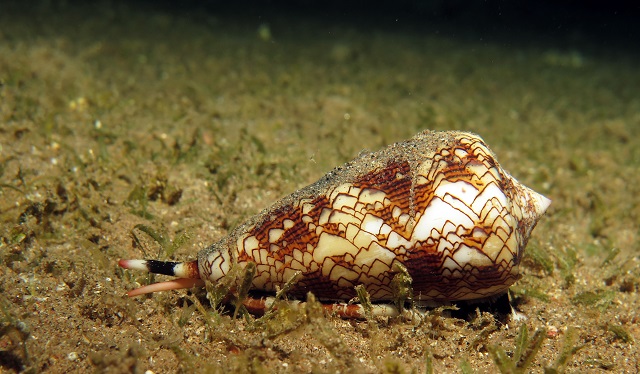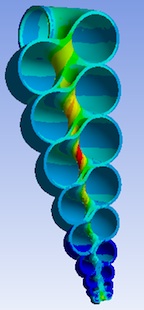By Alessandro Pirolini

Researchers from the Indian Institute of Science and Rice University are studying how mollusks can withstand high pressures at the bottom of the ocean. Mollusks have a soft interior but their exterior shell is designed in a way that protects them even in very harsh conditions.
The researchers modeled the mobile habitat of the average mollusk in order to gain insight into what caused these hard shells to be formed and how the mechanical principles of their design could be used in human-scale structures, such as buildings and vehicles.
The team of researchers, headed by Chandra Sekhar Tiwary, Indian Institute of Science research student and a visiting student at Rice University, developed computer models and 3D-printed two types of shell for conducting stress tests, along with real shells collected from Indian beaches.
The researchers reported that the shells that had evolved over the years were not only effective for protecting the mollusk inside, but also redirected the stress to areas where it is least likely that the soft creatures would be present.
 A stress map shows how a seashell redirects stress to its strongest areas. Image credit: Indian Institute of Science / Rice University
A stress map shows how a seashell redirects stress to its strongest areas. Image credit: Indian Institute of Science / Rice University
The American Association for the Advancement of Science, Science Advances published their results in a new online journal. Shells comprise nacre, also called mother-of-pearl, which is a resilient and robust matrix of inorganic and organic materials, researched recently by other Rice engineers as a model of stiffness, strength and toughness.
Tiwary and his team added a new dimension to the research by discovering the secret behind the stability of seashells and how they redirect the stress to reduce damage in cases where failure may occur. The calculations obtained proved that the unique shell shapes make them twice as good at load bearing than nacre alone.
Two types of mollusk were studied by the researchers. One mollusk included bivalves with distinct exoskeleton components that met at a hinge similar to clamshells, and the other was terebidae, which hide themselves in shells that are shaped like a screw.
Stress is applied on the hinge in the case of clamshells due to their curved ribs and the semicircular shape, while in the case of terebidae, the load is directed toward the center and the broad top by the screws. This kind of evolutionary optimization causes fractures to be seen only at regions where there is the least chance of hurting the organism inside.
Tiwary commenced the work with Kamanio Chattopadhyay, chair of mechanical sciences at the Indian Institute of Science, Bangalore.
The researchers observed that engineers have used mechanical concepts from natural shapes such as shark teeth and beak shells for the design of automotive components, protective shields and also buildings. However, seashells signify an ideal example of evolutionary optimization for handling a range of mechanical loads.
Nature keeps on making things that look beautiful, but we don’t really pay attention to why the shapes are what they are.
Chandra Sekhar Tiwary
Member of the Rice University Material Science Labs
While mathematicians, artists and biologists have provided the literature regarding seashells, material scientists “haven’t tried to think about these complex shapes because making them is not easy,” Tiwary said. As 3D printing has evolved rapidly over the years, it has become very easy to imitate the shapes with strong and resilient materials. “With the help of 3-D printing, these ideas can be extended to a larger reality,” he said.
Fan-shaped polymer shells were printed by researchers including some shells that did not have their typical converging ribs. Cones were also made that imitated the screws but void of the complexities.
The researchers discovered that the rib-less fans were not very effective at redirecting the stress towards the fan base but dispersed it to three different areas across the shell. The cracks that were finally observed in the fan were seen at identical spots near the fan base in the printed version and the real shell.
They reported that the manner in which stress was distributed in the complicated screw shape was completely different. The robust inner shell core was affected the most, easing stress from the exterior surface and shifting it to the upper most ring. The researchers concluded that the screw shaped shell was superior in the protection of its delicate interior.
“There are plenty of shapes that are even more complicated, and they may be even better than this for new structures,” Tiwary said.
Undergraduate Sharan Kishore, graduate students Suman Sarkar and Professor Debiprasad Roy Mahapatra at the Indian Institute of Science are the co-authors. Chattopadhyay is also a professor of materials engineering at the institute. Ajayan is chair of Rice’s Department of Materials Science and NanoEngineering, the Benjamin M. and Mary Greenwood Anderson Professor in Engineering and a professor of chemistry.